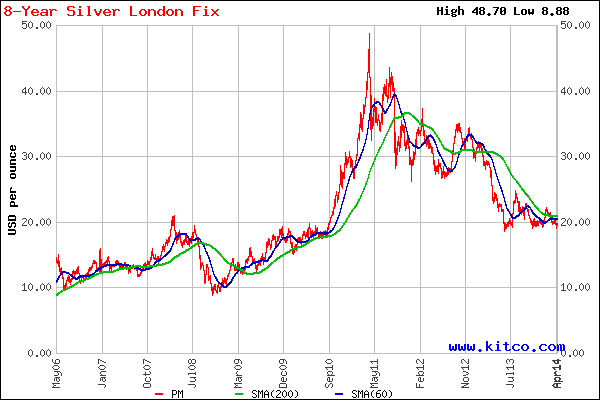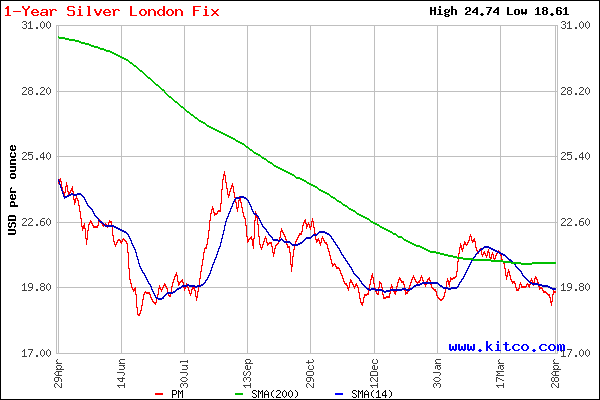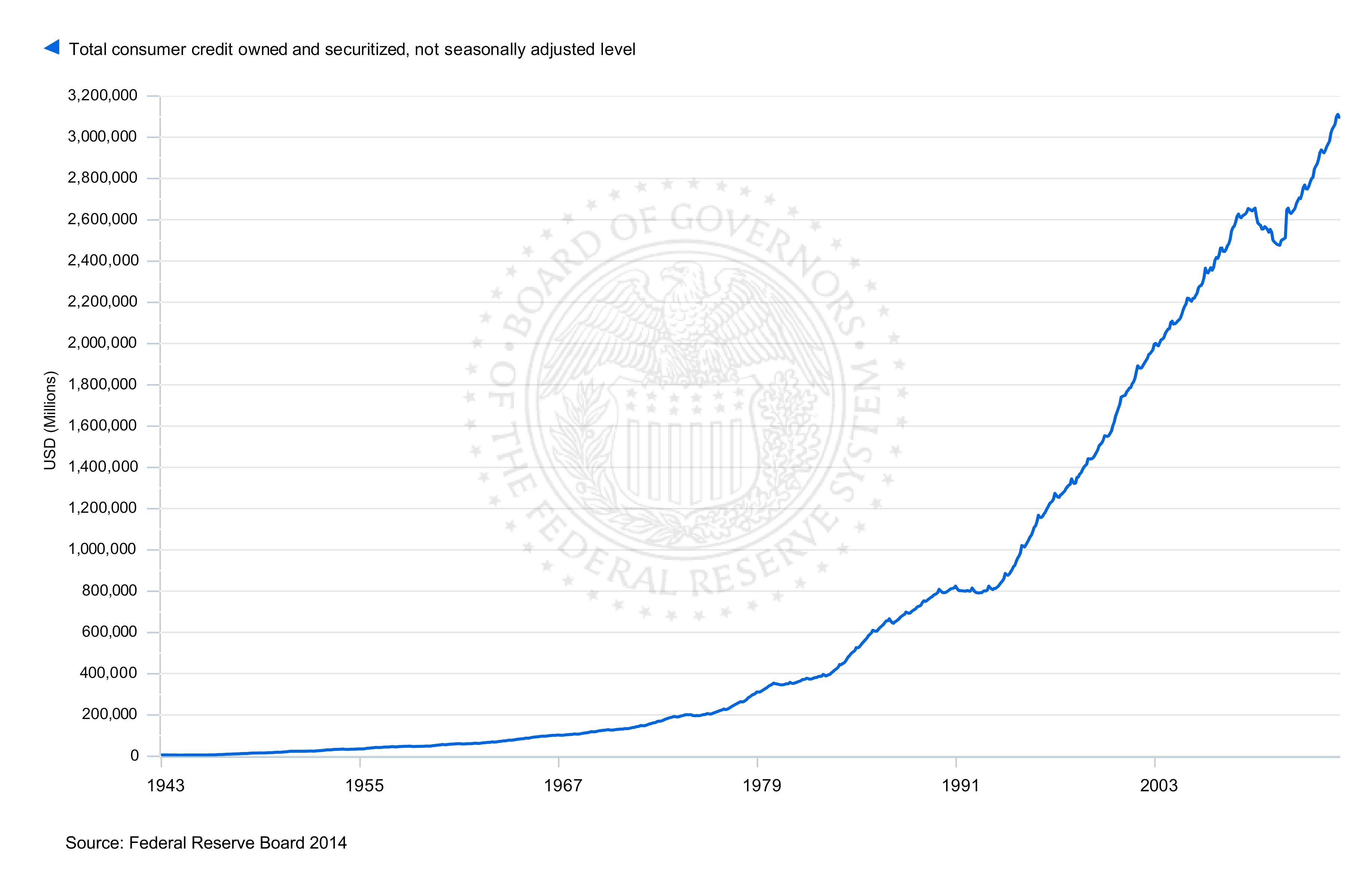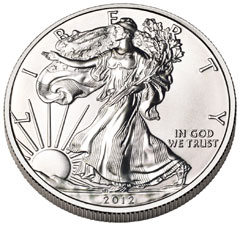 Sales of the US Mint American Eagle silver bullion coins dropped sharply during February from both the previous month and comparable prior year period.
Sales of the US Mint American Eagle silver bullion coins dropped sharply during February from both the previous month and comparable prior year period.
The US Mint reported total sales of 3,022,000 ounces during February which is down by 19.4 percent from the comparable prior year period and down by a considerable 45.4 percent from the previous month. Due to strong January sales, however, total sales of the silver bullion coins is up slightly by 0.3 percent on the year.
There were four months during 2014 in which monthly sales of the silver bullion coins dropped below the 3 million level and yet sales hit an all time record high of 44,006,000 troy ounces. Average monthly sales of the silver bullion coins during 2014 came in at about 3.6 million ounces per month while the average monthly sales year to date during 2015 is at 4.3 million ounces. The silver bullion coins remain extremely popular with precious metal investors despite the decline in the price of silver since 2011. Long term silver investors allocating a portion of their portfolio to physical precious metals view the current bargain price of silver as an opportunity to load up as evidenced by 2014 record breaking sales.
The chart below shows the trend of sales for the US Mint silver bullion coins since 2000. Sales for 2015 are year to date through February 28, 2015. Ever since the financial crisis when the banking system can close to completely imploding, sales of silver bullion coins have exploded by about 500 percent and remained strong despite the so called recovery in the economy and banking system.
While the sales of gold bullion coins has declined since the financial crisis, silver bullion coins remain as popular as ever with investors seeking a store of value in physical precious metals.
The price of silver has declined sharply since the highs of 2011 as investors have fled what seems like a losing proposition, especially in comparison to stocks and bonds which have been pumped up in value by the Fed’s easy money policies and zero interest rates. Silver has seen volatile price action since the financial crisis but most investors who have made purchases since 2008 are now at about a break even price level or sitting with losses making this an interesting price juncture for silver investors.
Whether it be stocks, bonds, or precious metals, it is classic psychological behavior for investors to pile in at the top as prices are reaching bull market highs and then refuse to buy at the bottom when everyone is bearish. No one can predict the timing of future price moves, but with silver prices in the bargain bin and little interest by investors, this is probably an area that deserves additional investment by long term buy and hold investors. Silver has been considered money and a store of value throughout the ages and this is not likely to change, especially as desperate and over indebted governments rely upon printing press money from the central banks to keep the wildly over leveraged financial system from crashing again.
The sales of silver bullion coins by year since 2000 is shown below. The figures for 2015 include year to date totals as of February month end.
| American Silver Eagle Bullion Coins | ||
|
YEAR |
OUNCES SOLD |
|
|
2000 |
9,133,000 |
|
|
2001 |
8,827,500 |
|
|
2002 |
10,475,500 |
|
|
2003 |
9,153,500 |
|
|
2004 |
9,617,000 |
|
|
2005 |
8,405,000 |
|
|
2006 |
10,021,000 |
|
|
2007 |
9,887,000 |
|
|
2008 |
19,583,500 |
|
|
2009 |
28,766,500 |
|
|
2010 |
34,662,500 |
|
|
2011 |
39,868,500 |
|
|
2012 |
33,742,500 |
|
|
2013 |
42,675,000 |
|
|
2014 |
44,006,000 |
|
|
2015 |
8,552,000 |
|
| TOTAL |
327,376,000 |
|



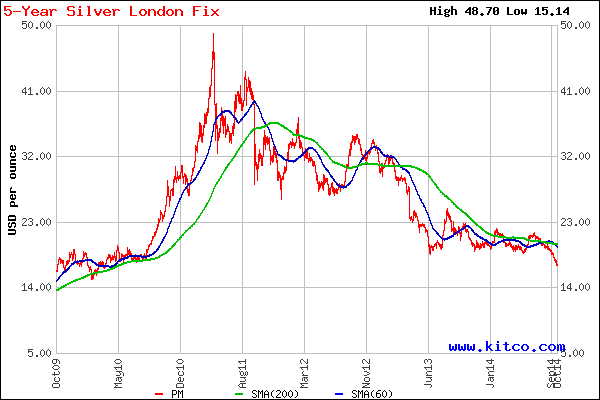
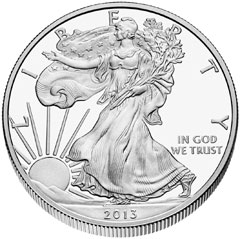


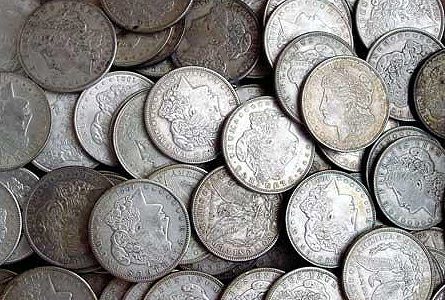
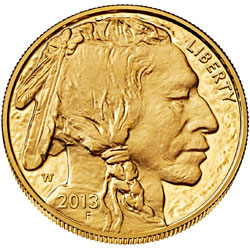 After almost a three year bear market in gold and silver it’s safe to conclude that most of precious metal bears have sold out and moved on. As gold and silver prices corrected sharply over the past three years, the chorus of bearish sentiment in the mainstream press has become endemic, thus setting the stage for a powerful and unexpected contra rally.
After almost a three year bear market in gold and silver it’s safe to conclude that most of precious metal bears have sold out and moved on. As gold and silver prices corrected sharply over the past three years, the chorus of bearish sentiment in the mainstream press has become endemic, thus setting the stage for a powerful and unexpected contra rally.



